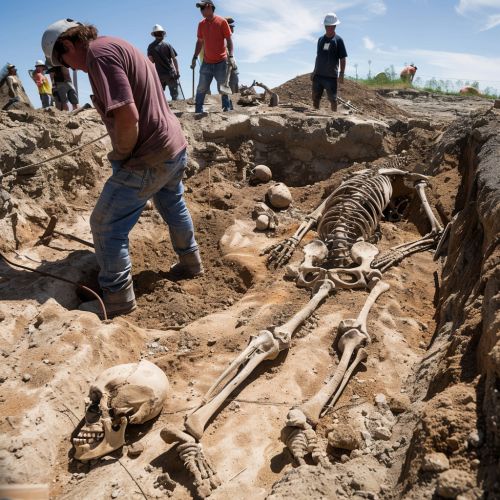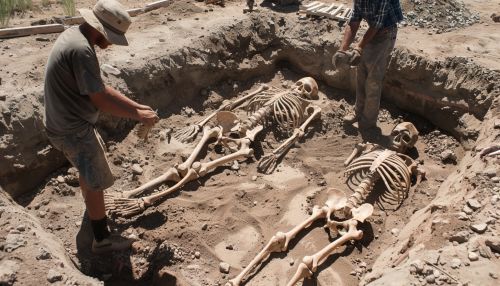Bioarchaeology
Introduction
Bioarchaeology is a sub-discipline of archaeology that integrates the study of human remains within their archaeological and historical contexts. The term was first coined by British archaeologist Grahame Clark in 1972, to refer to zooarchaeology, or the study of animal bones from archaeological sites. However, in the United States, the term has been used to describe the application of biological anthropological methods to the study of archaeological human skeletal remains since the 1980s.


History and Development
The development of bioarchaeology as a distinct discipline is largely attributed to the work of physical anthropologist Douglas Ubelaker and archaeologist Jane Buikstra. In the late 20th century, they advocated for a more holistic approach to the study of human remains, which involved integrating archaeological data with biological data derived from skeletal remains. This approach was a departure from the traditional osteology, which often studied bones in isolation, without much consideration for their archaeological context.
Methodology
Bioarchaeologists employ a variety of methods to study human remains. These include osteological analysis, paleopathology, stable isotope analysis, and ancient DNA analysis.
Osteological Analysis
Osteological analysis involves the study of skeletal material. Bioarchaeologists examine bones to determine the age, sex, stature, and ancestry of the individual at the time of death. This information can provide insights into the demographic structure of past populations.
Paleopathology
Paleopathology is the study of ancient diseases and trauma. By examining pathological conditions in skeletal remains, bioarchaeologists can gain insights into the health status, disease prevalence, and injury patterns of past populations.
Stable Isotope Analysis
Stable isotope analysis involves the measurement of different isotopes in skeletal remains. This method can provide information about diet, migration patterns, and weaning practices in past populations.
Ancient DNA Analysis
Ancient DNA analysis involves the extraction and sequencing of DNA from archaeological remains. This method can provide information about genetic relationships, population history, and the evolution of disease.
Applications
Bioarchaeology has a wide range of applications, from reconstructing past lifeways to informing modern public health policies.
Reconstructing Past Lifeways
Bioarchaeology can provide valuable insights into the lifeways of past populations. For example, the study of diet and nutrition can reveal information about subsistence strategies, food preferences, and social inequality. Similarly, the study of health and disease can shed light on the living conditions, stressors, and resilience of past populations.
Informing Modern Public Health Policies
By studying the health and disease patterns of past populations, bioarchaeologists can contribute to our understanding of modern health issues. For instance, the study of ancient tuberculosis can provide insights into the evolution and spread of the disease, which can inform modern public health strategies.
Challenges and Ethical Considerations
Bioarchaeology faces several challenges and ethical considerations. These include issues related to the excavation, analysis, and curation of human remains, as well as the interpretation and presentation of bioarchaeological findings.
Excavation, Analysis, and Curation
The excavation, analysis, and curation of human remains require careful consideration to ensure respect for the deceased. This includes obtaining necessary permissions, treating remains with dignity, and ensuring their long-term preservation.
Interpretation and Presentation
The interpretation and presentation of bioarchaeological findings must be done with sensitivity and respect for the cultural and historical contexts of the remains. This includes avoiding sensationalism, respecting cultural beliefs and practices, and engaging with descendant communities.
